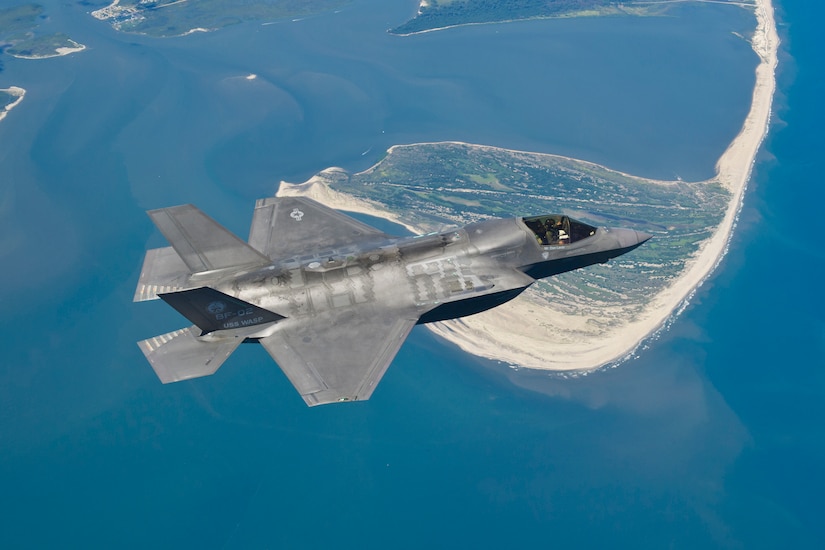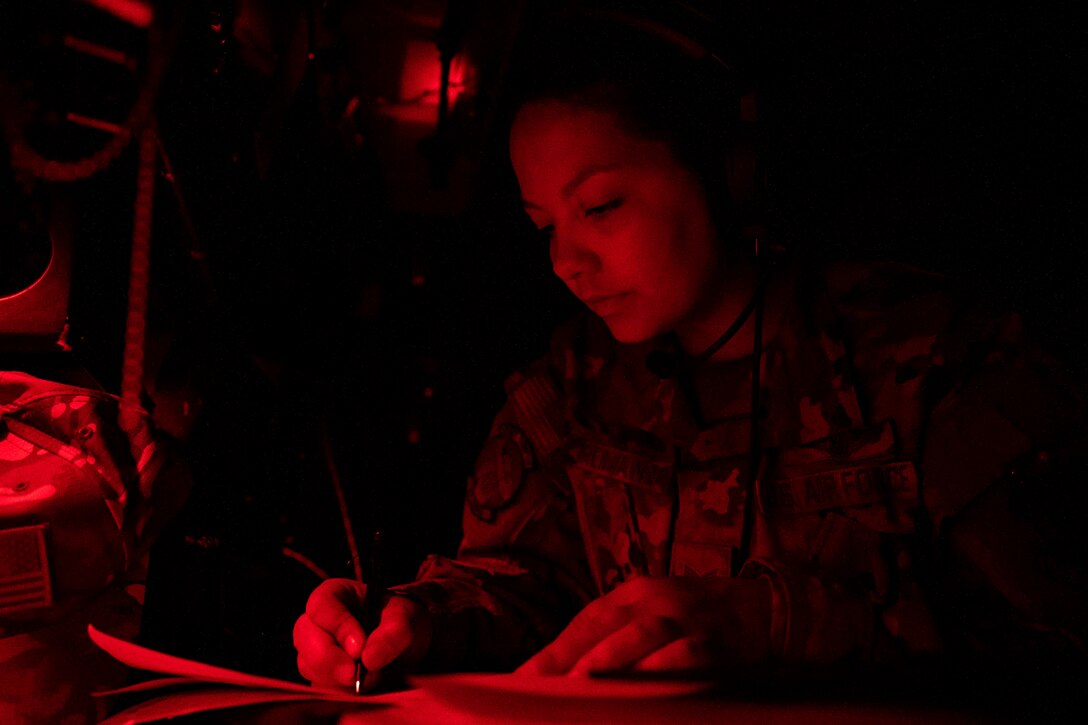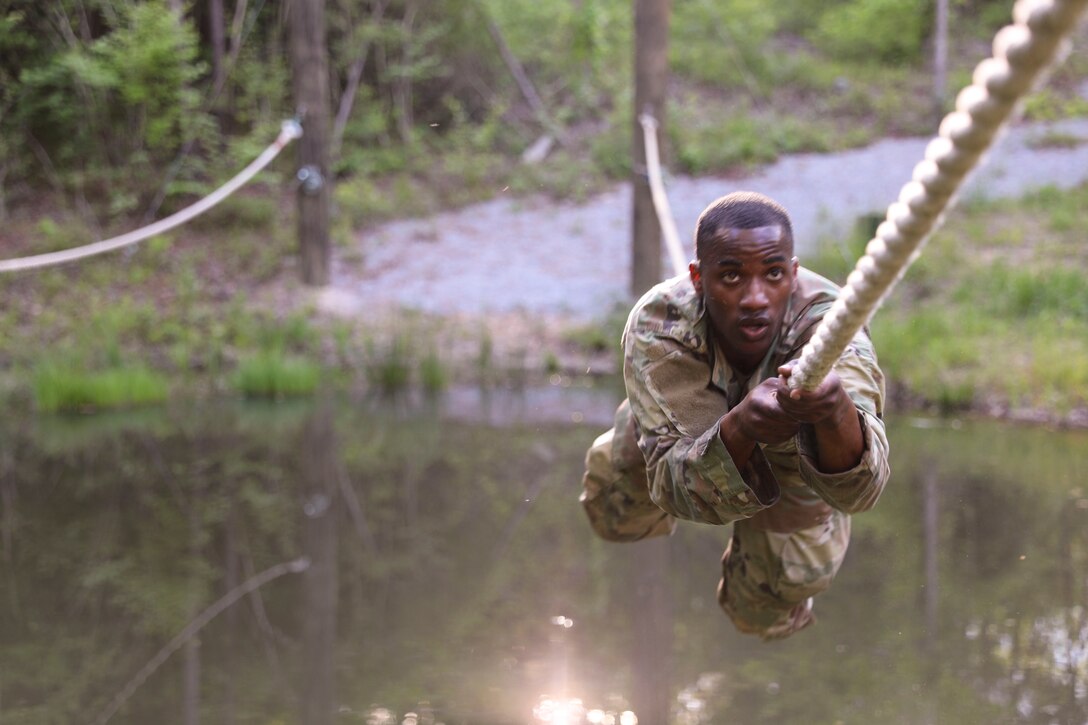April 23, 2021 | , DOD News
About 70 miles southeast of Washington is Vienna, Maryland. It sits on the Nanticoke River, which drains into the Chesapeake Bay.
Deputy Defense Secretary Kathleen Hicks visited the Middle Chesapeake Sentinel Landscape in Vienna yesterday on the 51st anniversary of Earth Day to highlight the Sentinel Landscape partnership there.

At locations designated as sentinel landscapes, a multiagency and multi departmental partnership connects private landowners with government assistance programs that fund land protection and natural resource restoration projects. By aligning these programs in sentinel landscapes, the departments of defense, agriculture and the interior use taxpayer dollars more efficiently and accomplish more on the ground with fewer resources.
Environmental conservation groups in the region are interested in preserving the wetlands and natural habitats that surround the Nanticoke. But there's broader interest, as well, in preserving larger sections of the region — not just to keep agriculture strong, but to preserve the Navy's use of that airspace for testing and flying aircraft.
A big part of that preservation effort is DOD's Readiness and Environmental Protection Integration program. The program allows the military services to partner with state and local governments to preserve land use around military installations and ensure DOD's continued ability to train in those areas.
If agricultural land inside the bounds of the Atlantic Test Range, where Naval Air Station Patuxent River tests aircraft, is opened to commercial or residential development, the Navy may no longer be allowed to fly over those areas. Ensuring the Navy's continued use of that airspace is one of the key responsibilities of the Middle Chesapeake Sentinel Landscape Partnership.
In the Chesapeake Bay area, REPI helps fund the Middle Chesapeake Sentinel Landscape Partnership, which involves a multitude of state, local and environmental organizations in addition to DOD, DOI and Agriculture.

"We all work together to advance a set of shared land-use goals around our military installations and ranges," Kristin Thomasgard, REPI director, said during a gathering of conservation partners in Vienna on Thursday. "Over the six-year lifespan of the Middle Chesapeake Sentinel Landscape Partnership, we've been able to see just how valuable these partnerships can be."
She said REPI has been able to leverage about $17 million in DOD funding with over $88 million in federal, state, local and private funds to protect more than 50,000 acres of land within the Middle Chesapeake Sentinel Landscape Partnership area of concern and enroll 131,000 acres of land in technical assistance programs that lead to sustainable land-use practices.
"What this really demonstrates to me is that together we have been able to achieve outcomes that go far beyond what we can do individually," Thomasgard told partners. "Through this remarkable investment, this partnership has been able to sustain local, historical, agricultural, and fishing traditions; to protect critical forest habitats; improve community resilience to climate change; and to strengthen military readiness at one of the Navy's most important aircraft testing locations in the country."
Funding from REPI helps support the Middle Chesapeake Sentinel Landscape Partnership's efforts to preserve agriculture in the area, maintain natural habitats, and keep Navy aircraft flying, Hicks said.
"That's why programs like REPI are so important for how we think about maintaining the quality of our training environment, the longevity of our assets and also the relationships with the communities that we work so closely with that surround our installations," she said.

Use of the airspace that makes up the Atlantic Test Range is at the heart of the mission at NAS Patuxent River, where airborne research and development testing help bring aircraft — including the F-35 Lightning II — into the Navy.
Navy Capt. John Brabazon, the commander of NAS Patuxent River, said REPI and the Middle Chesapeake Sentinel Landscape Partnership keep his installation's mission viable.
"To date, REPI funding has been used to preserve 63 separate parcels — that's 63 willing land owners, 63 conservation partners doing the very time-consuming work to preserve more than 12,000 acres, so far, beneath the range air space," he said.
Brabazon also said he believes that the goal of preserving 50,000 acres of land can be met by 2045 with continued help from conservation partners.
"Through conservation of land by willing land owners we'll ensure that our mission, aircraft testing and training, can be accomplished safely," he told conservation partners gathered at a community center in Vienna. "Your Maryland naval air station could not protect its research, development and test mission without you."
Hicks told conservation partners that another issue that affects their waterside community — climate change — is important to DOD as well.
"In the national security community where DOD sits," she said, "we have long understood the effects of climate change and the devastating consequences it can have, both for our own installations and also for the way in which the world community grapples with change and has to deal with consequences of things like resources scarcity, shifting migration patterns, and the opening up of regions of the globe like the Arctic to new kinds of competition. These are all things we have to think long and hard about."
Adapting to and mitigating the effects of climate change, Hicks said, are considered "mission essential" within DOD.

"The cost of not paying attention to climate change can be quite devastating," she said.
Earlier this month, Hicks visited Pensacola Naval Air Station in Florida, which suffered damage from last year's Hurricane Sally. Tyndall Air Force Base, Florida, suffered around $6 billion in damage from the same hurricane.
"We were learning about the billions of dollars in damage caused from extreme weather events, like [the] increasing frequency of hurricanes," she said of the trip.
Hicks said the effects of environmental change, such as rising sea levels and wildfire fires, greatly affect DOD's ability to operate.
"These are major challenges — rising sea levels if you're in Norfolk, [Virginia], if you're in Camp Lejeune, [North Carolina] — major challenges to how we think about the safety and security of not only our personnel and the cost of our installations, but, frankly, the readiness — our ability to actually the execute mission," she said. "How many days, for instance, are we down, not able to train, because we're not able to due to weather events? That's why DOD cares a lot about thinking through, in the long-term, how we manage."


















